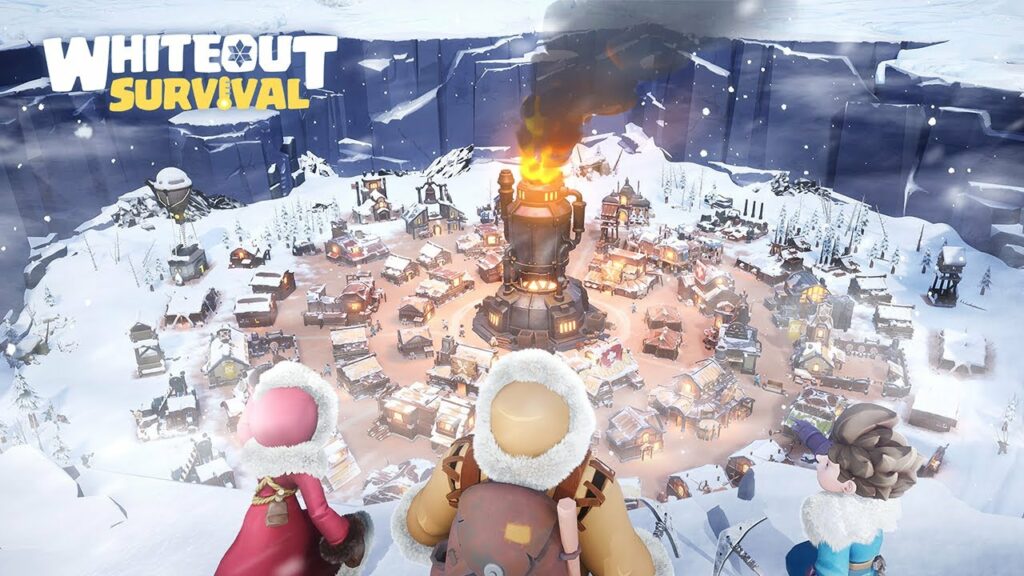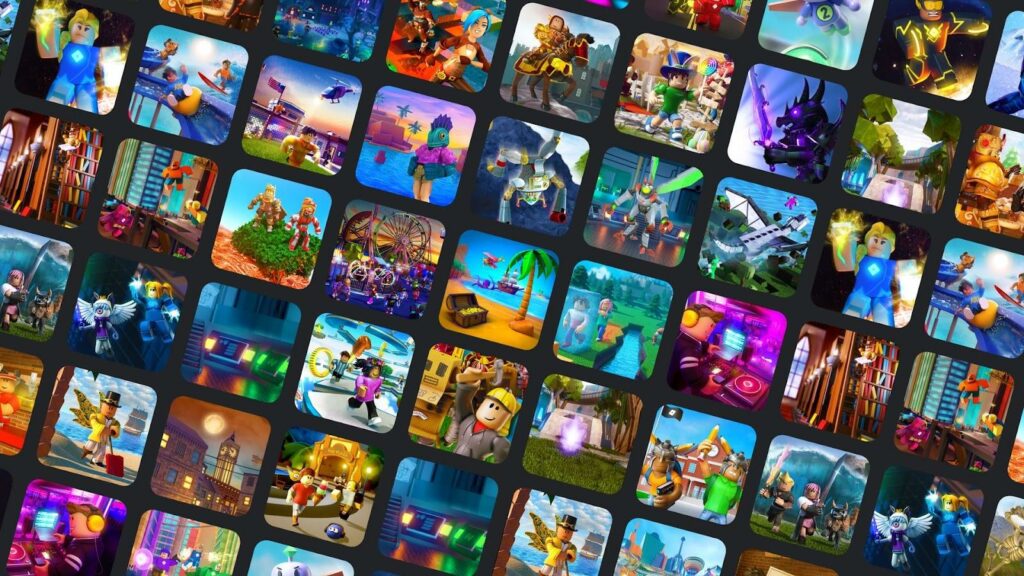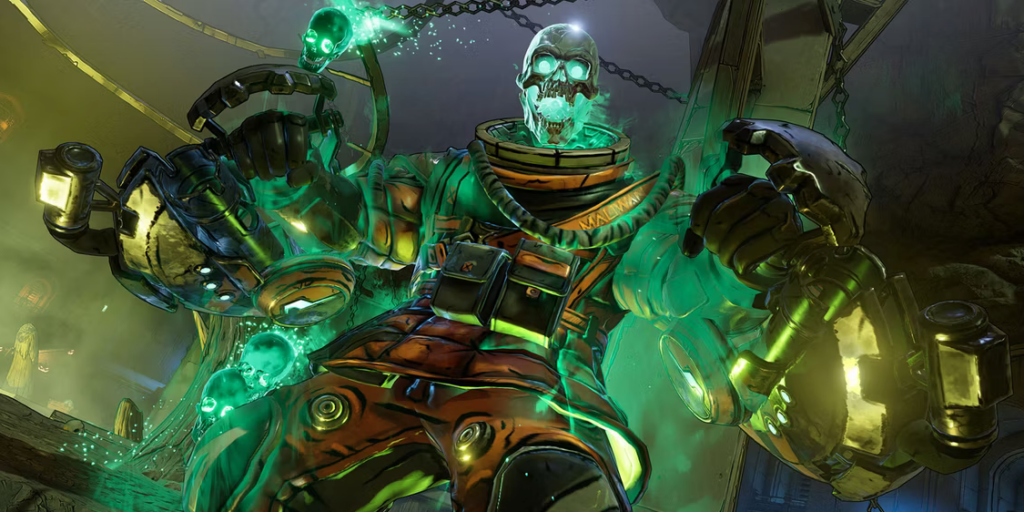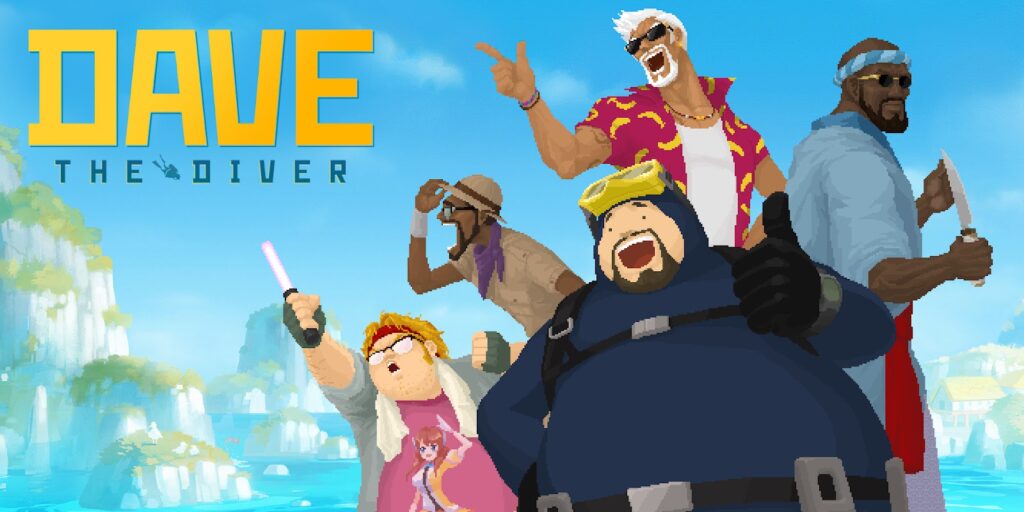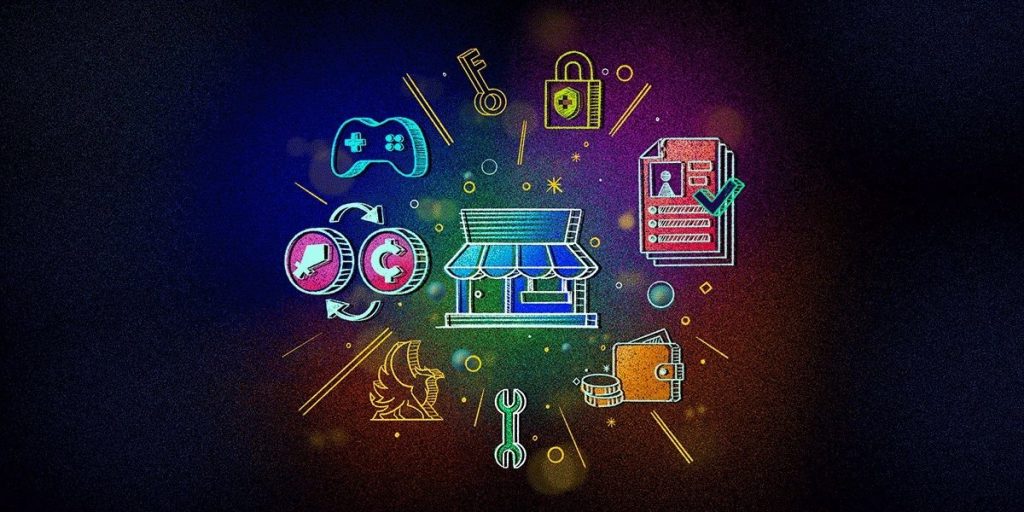
Download The Full PDF Report
Enter your email address to receive the full PDF Report , and sign up for Naavik Digest.
We respect your privacy.
This deconstruction of Free Fire was originally posted in Naavik Pro during March. Now, we’re excited to publish the full report for free, and, in collaboration with GameMakers, share a great discussion about it with our team. Note: some data will be outdated, but the trends stand — and you can always sign up to get day one access to all of our premium reports.
Introduction
Last December, Free Fire, the battle royale game that is still relatively unknown in the West, reached a huge milestone: 1 billion downloads, making it the most downloaded Battle Royale game ever and placing it ahead of PUBG Mobile.

While that is definitely a noteworthy achievement, Free Fire has been breaking records left and right since it launched in September 2017:
- In 2021, it was the most downloaded game (fourth in 2018, close second behind PUBG in 2019 and 2020; and finally hitting the first position last year).
- In Brazil, a country notoriously known as a no-spender market, it broke records from the start, beating the second best, Clash Royale, by more than 4x.
- Free Fire cemented the first position regarding revenue in the Indian market after PUBG was removed from the Indian stores September 2020, and until the recent ban, showed a strong upwards trend in one of the fastest growing markets of the world.
- In May 2020, Free Fire beat a record set by Fortnite when it came to the most players online at the same time.
- Free Fire was the most watched battle royale game of 2021 (1.08 billions hours watched), slightly edging out Fortnite. Related, since December 2020, Free Fire is the second most watched game on YouTube, after Minecraft.
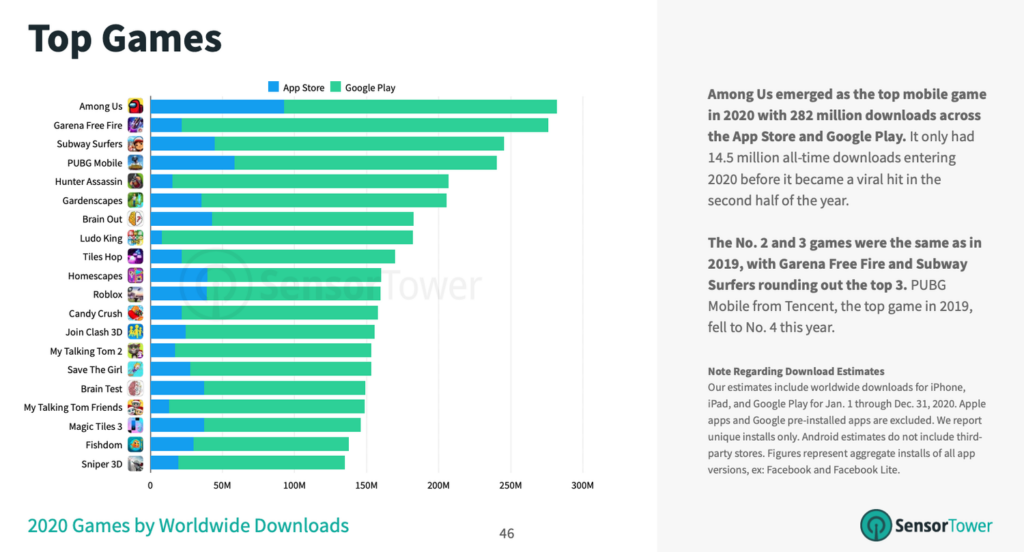
As we know, the battle royale world is full of big names and stories: Fortnite disappeared from both the App Store and Google Play store after issues with direct payments in the game. India banned PUBG for digital sovereignty reasons with a bang (and returning with a slightly smaller bang and green blood this summer) – a fate that just hit Garena mid-February!
What sets Free Fire – and its developer, Garena – apart is how it breaks a long standing axiom that to be a successful developer, you need to be successful in the West. As we’ll cover in detail in this report, Free Fire rose up in countries like Brazil, Mexico, Indonesia, Thailand, India… and only way later grew in popularity in the United States.
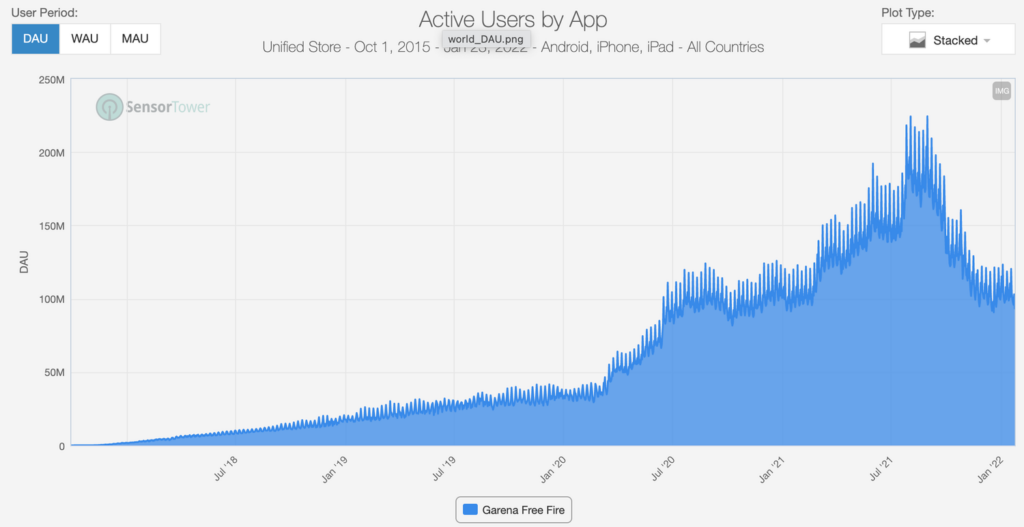
Notably, after such a meteoric rise, daily active users (DAUs) have been steadily dropping since August 2021 – and the decline is occurring across regions. For a company that relies on the profits from its gaming business to fuel reinvestments into its other major ambitions (e-commerce, payments, etc.), this is concerning.
In this essay, we will look into:
How did Garena build up the game to this point? What core design elements of the game led to it becoming so successful across regions?
- What are the regional stories – namely SouthEast Asia (SEA), Latin America, India, and the US – and why do they matter?
- How does Free Fire and Garena fit into the larger Sea Limited (parent company) ecosystem?
- Why has Free Fire been losing users and revenue in recent months? Why has it fallen so precipitously from the peak… and was it actually the peak?
- Why did Garena launch an HD version of the game, Free Fire Max, last fall? Plus, what else should we expect from Free Fire going forward?
The Story of Garena and Sea Limited
Free Fire is developed by Garena and a Vietnamese studio called 111dots. Garena itself is a part of a Sea Limited, a Singapore-based tech giant with grand and broad ambitions. We’ll dig deeper into Garena, plus Sea Limited’s past and future – and what it all has to do with Free Fire. Off to the broader context!
Garena: The Platform

Garena’s first product was a gaming platform (under the same name) that connected players across SEA over the last two decades. Starting as a distributor of LAN games such as Counter Strike, Starcraft, and Call of Duty 4, Garena struck a deal with Riot Games around 2010. From the games operated back then, only League of Legends remains, and Garena won’t get publishing rights to Riot’s new games (Riot is building its own team in Singapore). That said, Garena still operates Call of Duty: Mobile and Arena of Valor in certain regions.
This platform originally offered three main user-facing functions: chat, a clan system, and leagues. This is all notable but perhaps the most important advantage was the knowledge Garena gained regarding network optimization, a critical skill that contributed to the success of Free Fire.
Understanding what players needed (a community, a way to communicate, a shared goal) in these early days of massive multiplayer gameplay speaks to founder and CEO, Forrest Li’s visionary qualities.
Another smaller yet noteworthy moment from the early days was the creation of the Thai server alongside the localization of League of Legends in 2012. The team also created a special ‘Muay Thai’ skin for the in-game champion Lee Sin. As we’ll dig into more, bringing local flavors into games is one of the biggest strengths that Garena possesses and utilizes heavily in Free Fire.
After helping bring League of Legends and Arena of Valor to new regions, Garena landed and deepened a partnership with Tencent, which granted publishing rights in Indonesia, Taiwan, Thailand, the Philippines, Malaysia, and Singapore. This partnership allowed Garena to grow its own knowledge and operations that would be later transferred to its own development.
Free Fire Development
Garena’s first internal studio was established in 2014 with the goal of acquiring talent in Southeast Asia and China to build its own games. After a couple years of battle royale gaining popularity via mods on PC games, Free Fire was launched on mobile in September 2017. For context, Fortnite came out at the same time, and PUBG appeared on mobile in early 2018.
The world’s top developers had been eyeing the genre for a while, but each took a different approach. Epic released Fortnite on PC and console first, porting to mobile in the following year. Bluehole, the Korean developer of PUBG, followed a similar path – first coming out with an early access version on Xbox, then releasing the mobile (and F2P) version of the game in February 2018. Both of these games, the biggest Free Fire competitors, were intended for high-performing devices and have dominated the App Store since.

Garena took a different path.
While Epic and Bluehole were developing for clear, existing audiences (console/PC), Garena bet on the rise and ubiquity of ever-improving smartphones. It also took aim at specific regions; both LATAM and SEA, the two largest markets for Free Fire, were Garena’s target regions from the beginning. The team put effort into developing a game that would run on devices on which their competitors’ games wouldn’t, both in terms of data stream and the actual size of the game. Fortnite wasn’t even released on Android in its first two years.
As you can see in the charts below, Free Fire and PUBG have both recently hit 1 billion cumulative downloads, although Free Fire’s audience leans much more Android-centric.
Free Fire’s cumulative downloads:
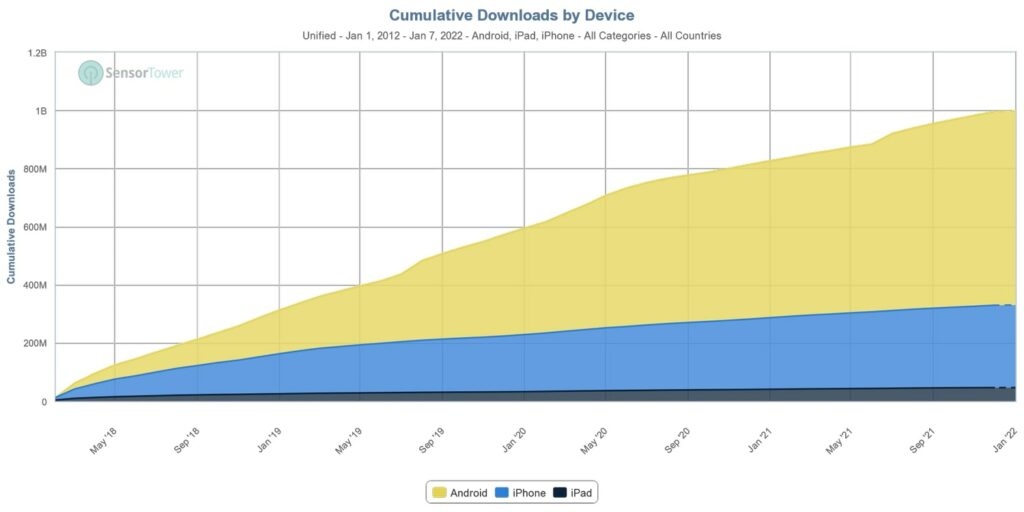
PUBG’s cumulative downloads:

This Android leaning bent – a reflection of the markets Garena targeted – led to Free Fire generating less cumulative revenue compared to PUBG, but its region-specific growth is still a remarkable feat.
Garena also wasn’t alone: other mobile-only battle royale games were released around the same time (Survivor Royale, Rules of Survival), but even the initially far more successful Rules of Survival didn’t stand the test of time.
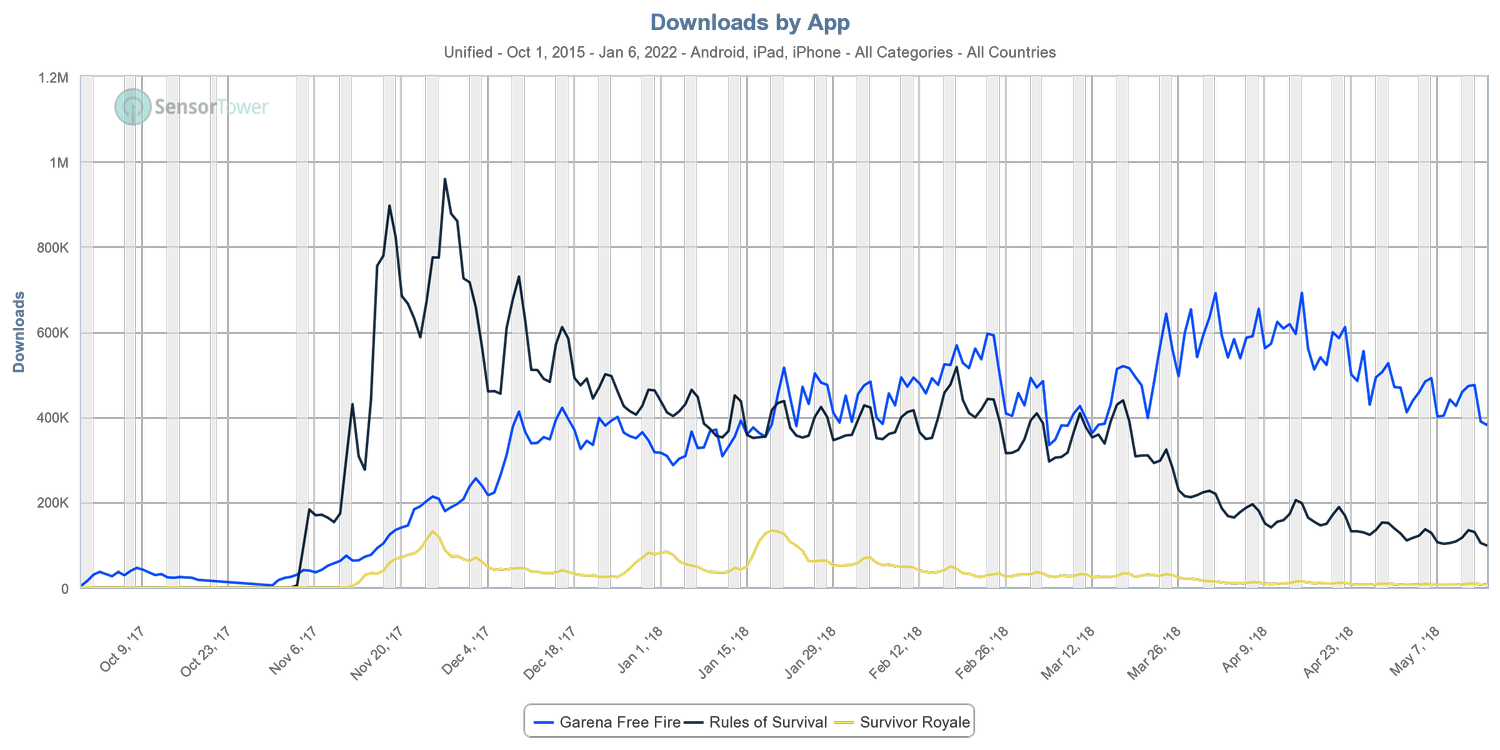
The Big Picture: Sea Ltd.
Let’s zoom out and focus on the parent company for a moment. Sea Limited is a Singapore-based tech company with three main businesses: Garena (video game), Shopee (e-commerce), and SeaMoney (digital payments).

Given that Shopee (founded in 2015) and SeaMoney (founded in 2014) predate the launch of Free Fire, it’s pretty clear that founder and CEO, Forrest Li, was thinking about expanding Sea Limited beyond games for quite some time. It’s not hard to see why – SEA was a rapidly developing region, many of the same digital trends that made gaming popular led to growth in other large industries, and other companies (like Tencent) had previously shown what’s possible. Of course, scaling multiple aggressive business units is a tall task, so it took time for all the pieces to fall into place.
Before Free Fire, Sea Limited was dependent on licensed games, which provided the company limited upside. After Free Fire started becoming enormously successful, however, everything changed. Most notably, the profits from Garena have been used to subsidize the rapid expansion (and market share leadership) of Shopee. For example, based on a recent earnings release, the Digital Entertainment Adjusted EBITDA was positive $715.1 million, while the e-commerce Adjusted EBITDA was negative $683.8 million. These numbers will ebb and flow – and the e-commerce unit should eventually turn profitable – but the role Garena plays to support the entire ecosystem is quite evident. Even though the company’s stock has been whacked (along with the rest of growth/tech recently), the fact that Sea Limited’s been able to build a $60B+ business out of gaming and e-commerce is still impressive – and the story is far from over.
The company's ambitions are still extremely high. Not only is it hoping to deepen its penetration in SEA (through traditional e-commerce but also through new avenues like ride sharing, hotel bookings, food delivery etc.), but it's beginning to target new markets for e-commerce (already including France, Poland, Spain, India, and Argentina). It may not succeed in all new ventures and in all new territories, but what do these new ventures all require? Capital! Therefore, the business may raise more money, but it also means the profitable parts of the business (games) still play an important role in fueling growth.
If Free Fire is waning – which we’ll dissect much more below – it may spark further revenue deceleration and put pressure on the company’s ability to internally reinvest at the same high levels. Any serious decline will likely lead to Garena pursuing new opportunities beyond Free Fire within gaming. We’ll dig into what that could look like later on in the essay, but given management's ambition and the financing role Free Fire and gaming play in Sea Limited's broader ecosystem, it's unlikely they'll sit still for long.
Before we dig into how the game is performing in different parts of the world and what the team can do to reaccelerate, let's first dig into the design of the game itself, what's unique about it, and how these characteristics led to tremendous global growth in the first place.
To get access to the rest of this report, sign up below!
Download The Full PDF Report
Enter your email address to receive the entire PDF Report, and sign up for Naavik Digest.


